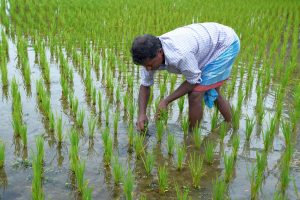As many as nine students from Himachal are being trained for documentation of local biodiversity in the form of (PBRs) for Biodiversity Conservation through United Nations Development Programme (UNDP) ‘Securing livelihoods, Conservation, Sustainable use and Restoration of high range Himalayan Ecosystems’ Project.
The one-month training programme on Para-taxonomy (Peoples Biodiversity Register focused) under the Government of India- -Global Environmental Finance (UNDP-GEF) Project commenced on Thursday.
Advertisement
The training programme is being organised by Himachal Pradesh ENVIS HUB at Himachal Pradesh Council for Science, Technology and Environment (HIMCOSTE), Shimla.
These students include 6 from Pangi in Chamba district, 2 from Lahaul and Spiti district and one from Shimla district who will be trained under the project.
The best of trained youth would be involved in making Peoples Biodiversity Registers (PBRs) in selected Landscapes by the HP State Biodiversity Board.
This program is being conducted in collaboration with HP Forest Department and State Biodiversity Board for Lahaul, Pangi and Kinnaur landscapes of the state.
The Chief Guest of the inaugural function was Dr Savita, Principal Chief Conservator of Forests (Wildlife).
Chief Conservator Forest (Wildlife) Anil Thakur and Dr YS Parmar University of Horticulture and Forestry (UHF), Nauni Regional Fruit Research Station retired Associate Director Dr SP Bhardwaj were special guests on the occasion.
Speaking on the inaugural function today, Principal Chief Conservator Forest (Wildlife) Dr Savita, said that snow leopard is the iconic animal of high Himalayas.
Good numbers of these apex predators denote a healthy ecosystem, she added.
To ensure the survival of these beautiful animals, sustainable use of forest resources and generation of alternative livelihood opportunities is pertinent.
The initial step to conserving local biodiversity is its documentation as PBRs.
She lauded efforts of ENVIS Hub in implementation of Green Skill Development Program (GSDP) last year and now training students in SECURE Project.
HP ENVIS Hub Coordinator, Dr Aparna Sharma informed that under this course, selected students would be imparted theoretical and practical knowledge by eminent experts in the fields of botany, zoology, forestry, wildlife, importance and conservation of Biodiversity, waste management, remote sensing and Geographic Information Centre (GIS).
In association with State Biodiversity Board, field visits would be carried out to prominent Universities, Research Institutions and conservation areas of Himachal Pradesh for exposure of local flora, fauna and its documentation in PBRs.











